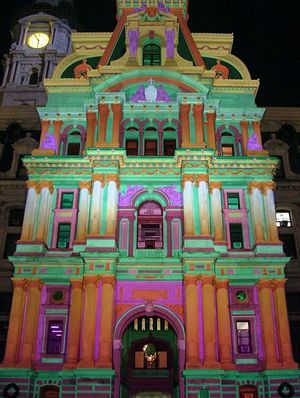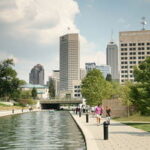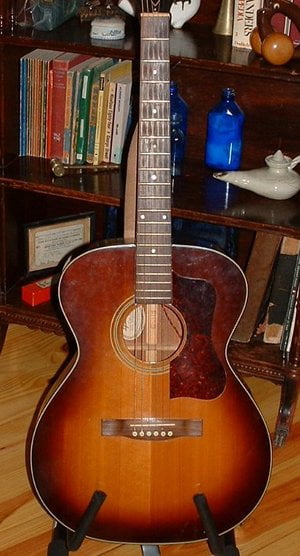This article is the thirty-eighth in a 50-state series: it lists the largest cities and towns (hereinafter “cities”) in Pennsylvania by population size and provides demographic details for each city–total population, population by age group, racial composition of the population, land area, and population density.
The data in this article was updated to include the latest 1, 3, and 5-year population estimates from the United States Census Bureau where available.
After reading “Largest Cities in Pennsylvania (2012),” return to this link to read “Best Places to Live in Pennsylvania (2012).”
Similar articles for the remaining 49 states can be found at these links: Alabama, Alaska, Arizona, Arkansas, California, Colorado, Connecticut, Delaware, Florida, Georgia, Hawaii, Idaho, Illinois, Indiana, Iowa, Kansas, Kentucky, Louisiana, Maine, Maryland, Massachusetts, Michigan, Minnesota, Missouri, Mississippi, Montana, Nebraska, Nevada, New Hampshire, New Jersey, New Mexico, New York, North Carolina, North Dakota, Ohio, Oklahoma, Oregon, Rhode Island, South Carolina, South Dakota, Tennessee, Texas, Utah, Vermont, Virginia, Washington, West Virginia, Wisconsin, and Wyoming.
1. Largest Cities in Pennsylvania (2012): Philadelphia, PA
Located in southeastern Pennsylvania, Philadelphia is the largest city in the state with an estimated population of 1,547,297.
Grouped by age, 25.1% of the population is under 18, 10.9% is 18 to 24, 27.3% is 25 to 44, 23.8% is 45 to 64, and 12.9% is 65 or older. The median age of the population is 35.5.
The racial composition of the city is 42.5% White, 43.5% Black or African American, 0.3% Native American, 5.5% Asian, 0.1% Pacific Island, 6.4% from other races, and 1.8% from two or more races. The population is 11.0% Hispanic or Latino of any race.
The land area of the city is 135.09 square miles. The city’s population density is 11,453.82 people per square mile.
2. Largest Cities in Pennsylvania (2012): Pittsburgh, PA
Situated in southwestern Pennsylvania, Pittsburgh is the second largest city in the state with an estimated population of 311,640.
The city has a relatively high percentage of college-aged residents: it is home to Carnegie Mellon University, Duquesne University, and the University of Pittsburgh. Classified by age, 17.8% of the population is under 18, 17.4% is 18 to 24, 24.6% is 25 to 44, 24.9% is 45 to 64, and 15.3% is 65 or older. The median age of the population is 36.7.
The racial complexion of the city is 67.0% White, 26.5% Black or African American, 0.1% Native American, 3.5% Asian, 0.1% Pacific Islander, 0.7% from other races, and 2.1% from two or more races. The population is 1.8% Hispanic or Latino of any race.
The land area of the city is 55.58 square miles. The city’s population density is 5,607.05 people per square mile.
3. Largest Cities in Pennsylvania (2012): Allentown, PA
Located in the central part of eastern Pennsylvania, Allentown is the third largest city in the state with an estimated population of 107,819.
Categorized by age, 26.1% of the population is under 18, 11.4% is 18 to 24, 28.9% is 25 to 44, 21.2% is 45 to 64, and 12.4% is 65 or older. The median age of the population is 32.8.
The racial profile of the city is 63.2% White, 11.0% Black or African American, 0.2% Native American, 1.9% Asian, 20.6 from other races, and 3.1% from two or more races. The population is 36.2% Hispanic or Latino of any race.
The land area of the city is 17.74 square miles. The city’s population density is 6,077.74 people per square mile.
4. Largest Cities in Pennsylvania (2012): Erie, PA
Located in northwestern Pennsylvania, Erie is the fourth largest city in the state with an estimated population of 103,573.
Arranged by age, 24.0% of the population is under 18, 12.8% is 18 to 24, 26.5% is 25 to 44, 22.9% is 45 to 64, and 13.8% is 65 or older. The median age of the population is 34.1.
The racial mix of the city is 78.8% White, 14.8% Black or African American, 1.0% Asian, 0.1% Pacific Islander, 2.5% from other races, and 2.8% from two or more races. The population is 5.2% Hispanic or Latino of any race.
The land area of the city is 21.96 square miles. The city’s population density is 4,716.44 people per square mile.
5. Largest Cities in Pennsylvania (2012): Reading, PA
Situated in southeastern Pennsylvania, Reading is the fifth largest city in the state with an estimated population of 80,997.
Sorted by age, 31.1% of the population is under 18, 11.8% is 18 to 24, 28.9% is 25 to 44, 18.5% is 45 to 64, and 9.7% is 65 or older. The median age of the population is 29.0.
The racial makeup of the city is 51.9% White, 11.9% Black or African American, 0.3% Native American, 1.6% Asian, 0.1% Pacific Islander, 30.3% from other races, and 3.9% from two or more races. The population is 52.1% Hispanic or Latino of any race.
The land area of the city is 9.82 square miles. The city’s population density is 8,248.17 people per square mile.
6. Largest Cities in Pennsylvania (2012): Upper Darby, PA
Located in southeastern Pennsylvania, Upper Darby is the sixth largest city in the state with an estimated population of 78,962.
Grouped by age, 25.5% of the population is under 18, 9.1% is 18 to 24, 29.5% is 25 to 44, 25.5% is 45 to 64, and 10.4% is 65 or older. The median age of the population is 35.7.
The racial composition of the city is 63.7% White, 23.2% Black or African American, 11.0% Asian, 0.9% from other races, and 1.2% from two or more races. The population is 2.8% Hispanic or Latino of any race.
The land area of the city is 7.87 square miles. The city’s population density is 10,033.29 people per square mile.
7. Largest Cities in Pennsylvania (2012): Bethlehem, PA
Located in the central part of eastern Pennsylvania, Bethlehem is the seventh largest city in the state with an estimated population of 73,338.
A comparatively large percentage of the population is college-aged: the city is home to Lehigh University. Categorized by age, 19.8% of the population is under 18, 17.0% is 18 to 24, 25.4% is 25 to 44, 22.2% is 45 to 64, and 15.6% is 65 or older. The median age of the population is 34.9.
The racial profile of the city is 78.8% White, 4.8% Black or African American, 0.1% Native American, 2.9% Asian, 10.3% from other races, and 3.1% from two or more races. The population is 22.9% Hispanic or Latino of any race.
The land area of the city is 19.26 square miles. The city’s population density is 3,807.79 people per square mile.
8. Largest Cities in Pennsylvania (2012): Scranton, PA
Situated in northeastern Pennsylvania, Scranton is the eighth largest city in the state with an estimated population of 71,941.
Classified by age, 20.1% of the population is under 18, 14.5% is 18 to 24, 23.6% is 25 to 44, 23.8% is 45 to 64, and 18.0% is 65 or older. The median age of the population is 38.1.
The racial complexion of the city is 91.8% White, 3.8% Black or African American, 0.1% Native American, 1.6% Asian, 0.1% Pacific Islander, 2.1% from other races, and 0.5% from two or more races. The population is 5.9% Hispanic or Latino of any race.
The land area of the city is 25.23 square miles. The city’s population density is 2,851.41 people per square mile.
9. Largest Cities in Pennsylvania (2012): Bensalem, PA
Situated in southeastern Pennsylvania, Bensalem is the ninth largest city in the state with an estimated population of 58,472.
Classified by age, 19.9% of the population is under 18, 9.2% is 18 to 24, 29.4% is 25 to 44, 29.4% is 45 to 64, and 12.1% is 65 or older. The median age of the population is 38.7.
The racial complexion of the city is 81.1% White, 8.4% Black or African American, 8.2% Asian, 0.8% from other races, and 1.5% from two or more races. The population is 5.9% Hispanic or Latino of any race.
The land area of the city is 19.97 square miles. The city’s population density is 2,927.99 people per square mile.
10. Largest Cities in Pennsylvania (2012): Lower Merion, PA
Situated in southeastern Pennsylvania, Lower Merion is the tenth largest city in the state with an estimated population of 57,597.
Arranged by age, 22.3% of the population is under 18, 10.7% is 18 to 24, 19.9% is 25 to 44, 29.8% is 45 to 64, and 17.3% is 65 or older. The median age of the population is 42.8.
The racial mix of the city is 87.8% White, 5.0% Black or African American, 0.1% Native American, 4.6% Asian, 0.8% from other races, and 1.7% from two or more races. The population is 2.9% Hispanic or Latino of any race.
The land area of the city is 23.69 square miles. The city’s population density is 2,431.28 people per square mile.
11. Largest Cities in Pennsylvania (2012): Lancaster, PA
Located in southeastern Pennsylvania, Lancaster is the eleventh largest city in the state with an estimated population of 55,361.
Sorted by age, 27.2% of the population is under 18, 13.3% is 18 to 24, 29.4% is 25 to 44, 20.9% is 45 to 64, and 9.2% is 65 or older. The median age of the population is 30.1.
The racial makeup of the city is 66.4% White, 15.3% Black or African American, 0.4% Native American, 2.2% Asian, 0.1% Pacific Islander, 12.1% from other races, and 3.6% from two or more races. The population is 33.2% Hispanic or Latino of any race.
The land area of the city is 7.4 square miles. The city’s population density is 7,481.22 people per square mile.
12. Largest Cities in Pennsylvania (2012): Abington Township, PA
Located in southeastern Pennsylvania, Abington Township is the twelfth largest city in the state with an estimated population of 54,384.
Grouped by age, 21.8% of the population is under 18, 7.7% is 18 to 24, 25.1% is 25 to 44, 29.0% is 45 to 64, and 16.4% is 65 or older. The median age of the population is 42.3.
The racial composition of the city is 80.3% White, 11.7% Black or African American, 3.3% Asian, 1.4% from other races, and 3.2% from two or more races. The population is 3.0% Hispanic or Latino of any race.
The land area of the city is 15.45 square miles. The city’s population density is 3,520 people per square mile.
13. Largest Cities in Pennsylvania (2012): Bristol, PA
Situated in southeastern Pennsylvania, Bristol is the thirteenth largest city in the state with an estimated population of 53,999.
Sorted by age, 22.7% of the population is under 18, 8.8% is 18 to 24, 27.9% is 25 to 44, 28.1% is 45 to 64, and 12.5% is 65 or older. The median age of the population is 38.5.
The racial makeup of the city is 86.2% White, 9.9% Black or African American, 2.4% Asian, 0.6% from other races, and 0.9% from two or more races. The population is 4.7% Hispanic or Latino of any race.
The land area of the city is 16.14 square miles. The city’s population density is 3,345.66 people per square mile.
14. Largest Cities in Pennsylvania (2012): Levittown, PA
Located in southeastern Pennsylvania, Levittown is the fourteenth largest city in the state with an estimated population of 52,685.
Arranged by age, 22.4% of the population is under 18, 8.5% is 18 to 24, 26.3% is 25 to 44, 29.2% is 45 to 64, and 13.6% is 65 or older. The median age of the population is 40.2.
The racial mix of the city is 93.5% White, 3.4% Black or African American, 1.9% Asian, 0.3% from other races, and 0.9% from two or more races. The population is 1.8% Hispanic or Latino of any race.
The land area of the city is 10.16 square miles. The city’s population density is 5,185.53 people per square mile.
15. Largest Cities in Pennsylvania (2012): Millcreek Township, PA
Located in northwestern Pennsylvania, Millcreek Township is the fifteenth largest city in the state with an estimated population of 52,022.
Categorized by age, 22.4% of the population is under 18, 8.9% is 18 to 24, 23.6% is 25 to 44, 29.4% is 45 to 64, and 15.7% is 65 or older. The median age of the population is 41.5.
The racial profile of the city is 95.6% White, 1.3% Black or African American, 0.1% Native American, 1.5% Asian, 0.6% from other races, and 1.0% from two or more races. The population is 2.4% Hispanic or Latino of any race.
The land area of the city is 29.48 square miles. The city’s population density is 1,764.65 people per square mile.
16. Largest Cities in Pennsylvania (2012): Haverford, PA
Located in the southeastern Pennsylvania, Haverford is the sixteenth largest city in the state with an estimated population of 48,348.
Grouped by age, 23.7% of the population is under 18, 9.6% is 18 to 24, 22.7% is 25 to 44, 28.3% is 45 to 64, and 15.7% is 65 or older. The median age of the population is 41.3.
The racial composition of the city is 93.5% White, 1.1% Black or African American, 0.1% Native American, 3.7% Asian, 0.4% from other races, and 1.2% from two or more races. The population is 1.8% Hispanic or Latino of any race.
The land area of the city is 10.01 square miles. The city’s population density is 4,829.97 people per square mile.
17. Largest Cities in Pennsylvania (2012): Altoona, PA
Situated in the southwestern part of central Pennsylvania, Altoona is the seventeenth largest city in the state with an estimated population of 46,418.
Classified by age, 22.7% of the population is under 18, 10.0% is 18 to 24, 25.6% is 25 to 44, 26.0% is 45 to 64, and 15.7% is 65 or older. The median age of the population is 38.7.
The racial complexion of the city is 95.4% White, 2.4% Black or African American, 0.1% Native American, 0.5% Asian, 0.1% Pacific Islander, 0.4% from other races, and 1.2% from two or more races. The population is 1.0% Hispanic or Latino of any race.
The land area of the city is 9.77 square miles. The city’s population density is 4,751.07 people per square mile.
18. Largest Cities in Pennsylvania (2012): Harrisburg, PA
Located in the southeastern part of central Pennsylvania, Harrisburg is the state’s capital and eighteenth largest city with an estimated population of 47,430.
Sorted by age, 27.0% of the population is under 18, 7.9% is 18 to 24, 29.1% is 25 to 44, 25.2% is 45 to 64, and 10.8% is 65 or older. The median age of the population is 34.7.
The racial makeup of the city is 33.5% White, 55.9% Black or African American, 0.3% Native American, 2.1% Asian, 5.0% from other races, and 3.3% from two or more races. The population is 13.4% Hispanic or Latino of any race.
The land area of the city is 8.11 square miles. The city’s population density is 5,848.34 people per square mile.
19. Largest Cities in Pennsylvania (2012): Middletown, PA
Situated in southeastern Pennsylvania, Middletown is the nineteenth largest city in the state with an estimated population of 46,882.
Arranged by age, 20.9% of the population is under 18, 9.5% is 18 to 24, 22.9% is 25 to 44, 30.8% is 45 to 64, and 15.9% is 65 or older. The median age of the population is 42.9.
The racial mix of the city is 93.0% White, 2.8% Black or African American, 0.1% Native American, 2.5% Asian, 0.4% from other races, and 1.1% from two or more races. The population is 1.5% Hispanic or Latino of any race.
The land area of the city is 19.11 square miles. The city’s population density is 2,453.27 people per square mile.
20. Largest Cities in Pennsylvania (2012): Lower Paxton, PA
Located in the southeastern part of central Pennsylvania, Lower Paxton is the twentieth largest city in the state with an estimated population of 45,301.
Categorized by age, 21.7% of the population is under 18, 6.7% is 18 to 24, 26.7% is 25 to 44, 30.5% is 45 to 64, and 14.4% is 65 or older. The median age of the population is 41.7.
The racial profile of the city is 83.8% White, 9.2% Black or African American, 0.1% Native American, 3.3% Asian, 1.5% from other races, and 2.1% from two or more races. The population is 4.1% Hispanic or Latino of any race.
The land area of the city is 28.1 square miles. The city’s population density is 1,612.14 people per square mile.
Source(s):
“American Community Survey,” U.S. Census Bureau
“American Fact Finder,” U.S. Census Bureau
“Population, Housing Units, Area, and Density: 2000,” U.S. Census Bureau








